Console Guides, Howto & Guides
Playing today – The Nintendo 64
In our newest series of articles, we will delve into the specifics of playing retro hardware in more modern times. Kicking off the series is an article on the Nintendo 64.
While the modern Nintendo tries to differentiate itself from the competition by designing consoles with unique, innovative features, when the N64 was released, Nintendo were still absolutely in the polygon pushing arms race. The Nintendo 64 is the most powerful cartridge based home system ever made and in some ways at least, the most powerful fifth generation console system released. Despite its focus on impressive visuals, Nintendo made some curious design decisions with the console which have ramifications for anyone wanting to use one today.
Resolution
Like most consoles of the 5th generation era, the bulk of Nintendo 64 games are rendered in 240p (NTSC) or 288p (PAL). As regular readers of our site will be aware, modern HDTVs almost invariably handle 240p/288p signals incorrectly. Using a CRT or an upscaler with the system is highly recommended.
AV Output
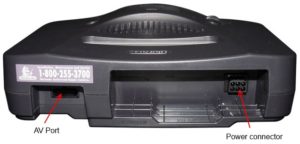 At the back of the N64 you can see the AV output jack and the power supply connector. Regardless of which AV cables you use, they all connect to the AV port shown in the picture. The connector is a proprietary Nintendo design and is used on several systems, you can see an example of the connector on the right.
At the back of the N64 you can see the AV output jack and the power supply connector. Regardless of which AV cables you use, they all connect to the AV port shown in the picture. The connector is a proprietary Nintendo design and is used on several systems, you can see an example of the connector on the right.
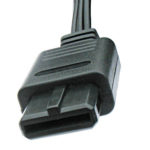
The important thing to remember is that although the connector is physically the same, cables for the SNES and Gamecube should be different internally. As we can see over on Eviltim’s game console SCART diagrams, there are differences between how the cables are wired. If you are having issues with picture brightness or similar, chances are you have a SCART cable that is wired for a different system. There are also differences between the PAL and NTSC S-Video and composite cables. If you need an RGB cable for an RGB modded N64, typically we recommend using a Gamecube RGB SCART cable.
The stock Nintendo 64 can output composite video or S-Video. RGB is available through hardware modifications. Particularly on HDTVs, composite video should be avoided. S-Video can give a reasonable picture, especially if you are using a CRT, but ideally you should modify your console to output RGB.
N64 AV cables are readily available from E-bay. If you only have the composite video cable (one RCA connector for picture and two for audio) you should consider upgrading to S-Video. For PAL consoles, make sure you get a S-Video cable wired with the additional 75ohm resistor to ground and 220uF capacitor in series on Luma and a 75ohm resistor to ground and 68nF capacitor in series on Chroma (see this page for more information). Consolegoods.co.uk sells correctly wired cables for PAL consoles.
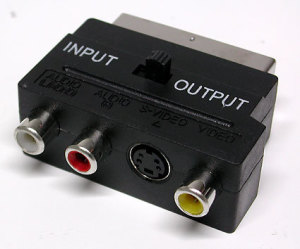 Remember that if your TV doesn’t have an S-Video connector, you can often connect S-Video via SCART using an adapter similar to the one pictured on the left here. You should check in your TVs instruction manual to determine if your set supports S-Video over SCART. Most TVs do support this, sets with multiple SCART inputs may support it only on one of the available SCART sockets. When using an adapter like this for S-Video, connect the S-Video cable and the audio cables only, do not connect the composite video cable at the same time.
Remember that if your TV doesn’t have an S-Video connector, you can often connect S-Video via SCART using an adapter similar to the one pictured on the left here. You should check in your TVs instruction manual to determine if your set supports S-Video over SCART. Most TVs do support this, sets with multiple SCART inputs may support it only on one of the available SCART sockets. When using an adapter like this for S-Video, connect the S-Video cable and the audio cables only, do not connect the composite video cable at the same time.
RGB Modifications
We can internally modify the N64 console to output RGB. If you have an NTSC console, this can usually be done for £25, if your machine is suitable. If you have a PAL console or an unsuitable NTSC console you will require this additional part before we can RGB modify your console. Please note we do not supply these parts, you will need to order them from the manufacturer (Otakus-Store) then send them to us for fitting.
To enquire about RGB upgrades for your console, please take a picture of the model number on the underside of the console, clearly showing the name and serial number of your unit. Then, use this contact form to get in touch with us.
The only way to be certain that your N64 is compatible with the ‘classic’ RGB mod is to dismantle it. If you want to do this yourself, there is a guide here. Otherwise, if your serial number indicates that the console is probably compatible with the cheaper mod, you can send it to us and we’ll advise you.
Power
The Nintendo 64 uses a custom designed power supply that clips into the back of the console. Remember that mains voltages vary around the world, so you cannot use a US power supply in Europe unless you obtain a step down converter. However, you can take a power supply from a European console and clip it into an American or Japanese console (or vice versa) and this will work perfectly.
Upscaling
If you are not using a CRT, it is highly recommended to use an external upscaler with your N64. This will drastically improve picture quality and in many cases reduce input lag too. As always, you will get the best results from an RGB modded machine. The N64 is known to work with both the XRGB3 and the XRGB Mini upscalers, click here for optimal settings and other recommendations.
Controller issues
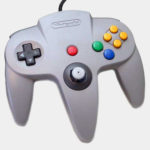 The N64 game controllers are some of the most innovative ever designed. They do have a particular design flaw however. The small joystick at the base of the controller is prone to failure. The failure is gradual and over time the dead-zone on the stick increases. This means that eventually, the console will not register that the stick is pushed to the full extent of its axis even if the player is physically pushing the stick as far as it can go. It is possible to buy replacement sticks though these replacements will eventually fail again over time.
The N64 game controllers are some of the most innovative ever designed. They do have a particular design flaw however. The small joystick at the base of the controller is prone to failure. The failure is gradual and over time the dead-zone on the stick increases. This means that eventually, the console will not register that the stick is pushed to the full extent of its axis even if the player is physically pushing the stick as far as it can go. It is possible to buy replacement sticks though these replacements will eventually fail again over time.
Regional lockouts and circumventions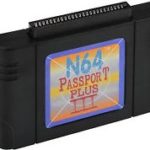
The Nintendo 64 is region locked. There is no 100% compatible way to defeat the consoles region locking. Adaptors such as the N64 Passport Plus 3 allow some import games to run.
It is possible to remove the lockout chip from one machine and transplant it into another, thereby allowing PAL games to boot on an NTSC system or vice versa. Gamers typically do this because it is easier to RGB modify NTSC systems.
It has been bought to our attention that some users have been able to install both region lockout chips in a single console and switch between them by using a simple toggle switch. This is a complex modification however and unfortunately we do not currently offer it to our customers.
Flashcarts
Flash cartridges exist for the system, allowing ROM images to be loaded. These cartridges can in some cases also circumvent regional lockouts. The most popular flash cartridge is the Everdrive 64.
Emulation
Several emulators exist for the Nintendo 64. Emulation of the system can be an excellent way to enjoy many of the N64s games on a HDTV. By freeing the games from the limitations of the original hardware, they can be upscaled and retextured for modern systems in ways that simply wasn’t possible back when the console was launched. Because of the complexities of simulating the N64 on a PC, configuring N64 emulators can be difficult. For more information and to download an emulator, see this page.
Nintendo 64 emulators are not considered accurate. The Nintendo 64s hardware is complex and significantly different to that found in a typical PC. The way the system draws triangles for instance is different to modern PC graphics cards, requiring significant work and computing time to directly emulate. Of course, many players do not concern themselves with this while playing classic N64 games in high definition resolutions, but it is something to be aware of. Many games will exhibit glitches or faults when played on an emulator, while some simply will not run at all.
Due to the unique design of the N64 controller, you may wish to use a N64 to PC controller adaptor. The models available from Raphnet and RetroUSB are reported to work well with minimal or no input lag.


Well it just so happens that it was yourself that did my rgb mods on both my N64 and my Super Famicom Jr :).
So would I be able to use the same NTSC rgb scart cable for the NTSC Famicom , NTSC Super Famicom and the NTSC N64 ?
Many thanks
🙂
If the cables wired for composite video for sync that should work, otherwise probably not.
Just a query with regard to RGB scart cables for Nintendo systems.
I own the following systems NTSC Super Famicom Jr (rgb modded), NTSC N64 (rgb modded), PAL GameCube and a NTSC Famicom AV (soon to be rgb modded).
I’m low on Scart inputs so if I can use a rgb scart cable on multiple systems it would be great. I know an ntsc rgb scart lead will be able to be used on both the FAV and SFCJr. Would this cable also work with my N64?
I assume that a RGB PAL GameCube cable will not work with the NTSC Nintendo systems that I own?
Thanks in advance for any help 🙂
It should do depending on how your N64 RGB mod has been done.